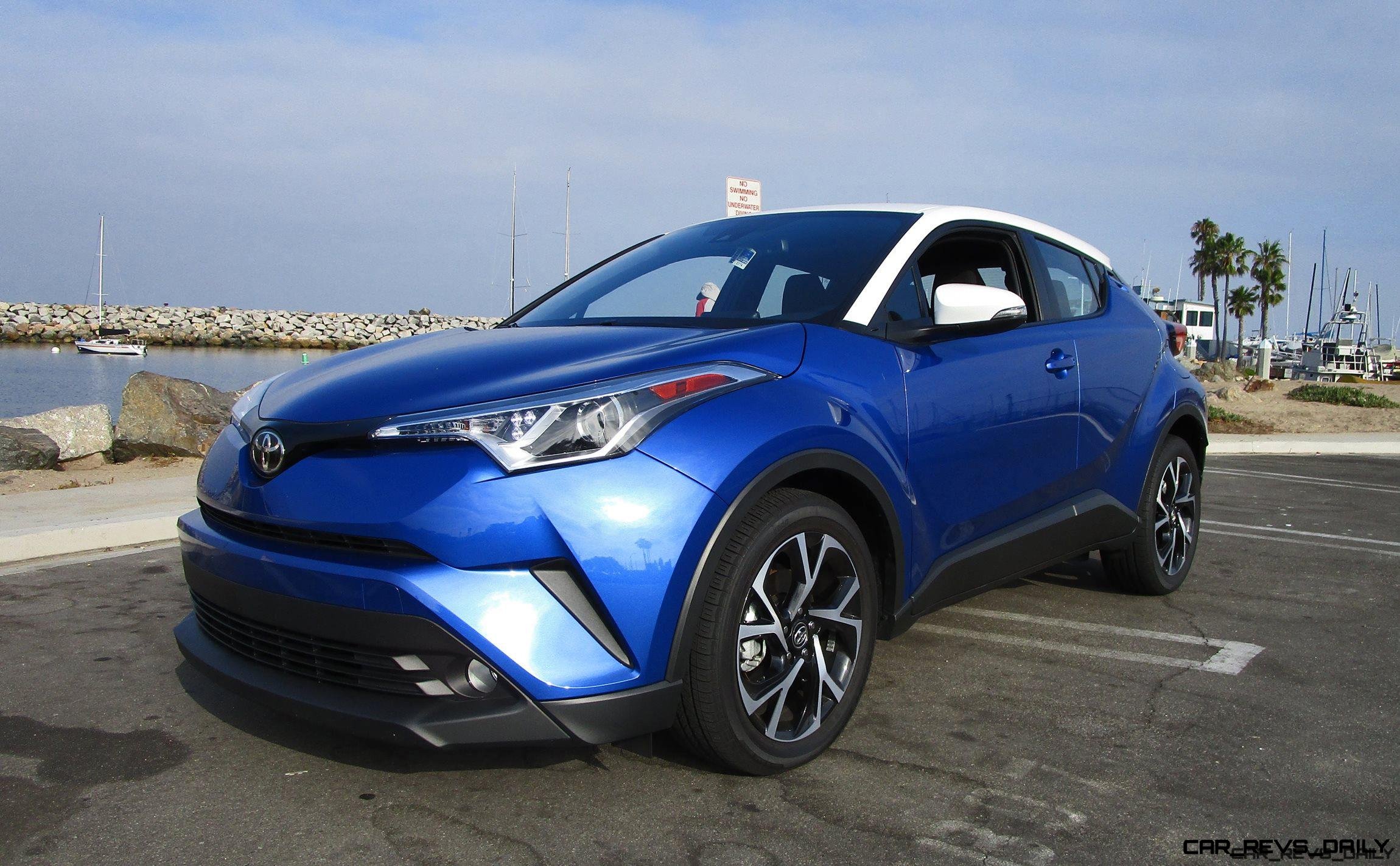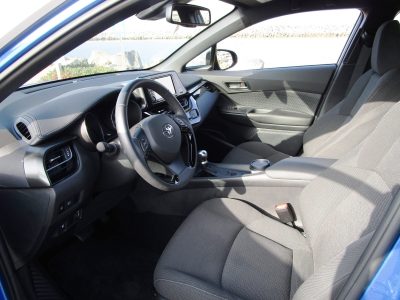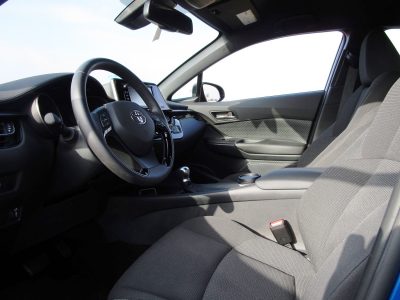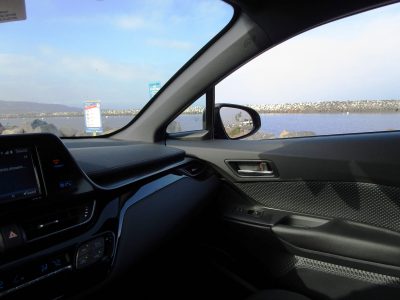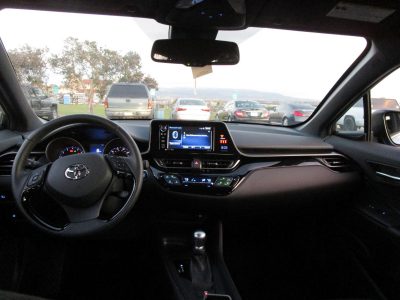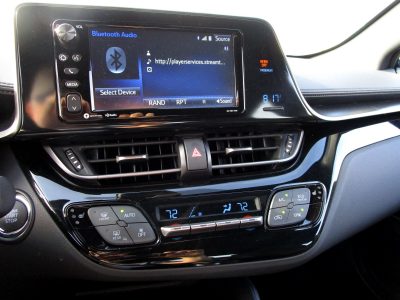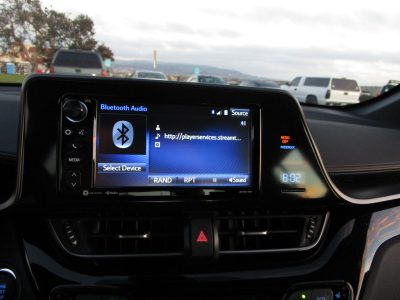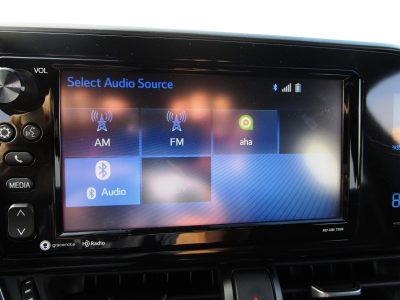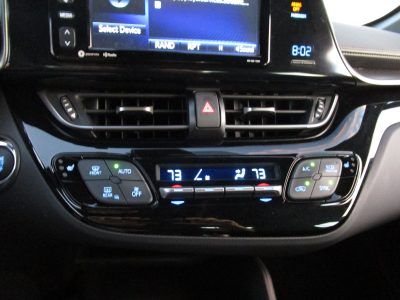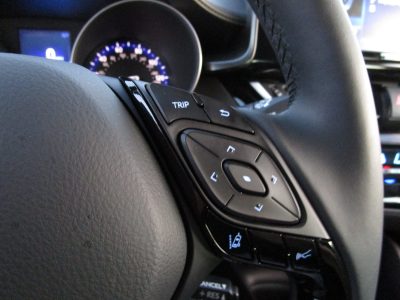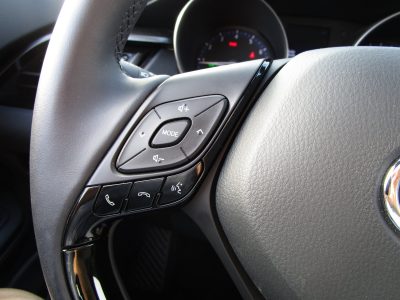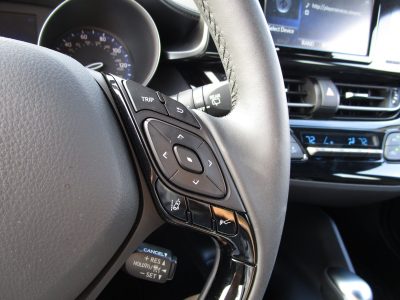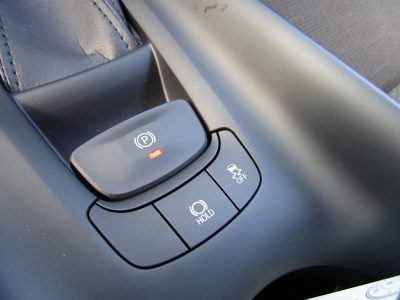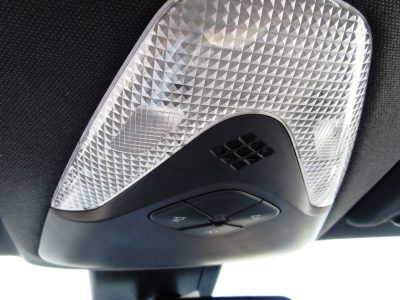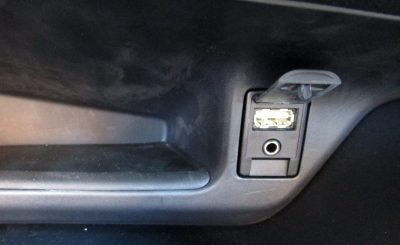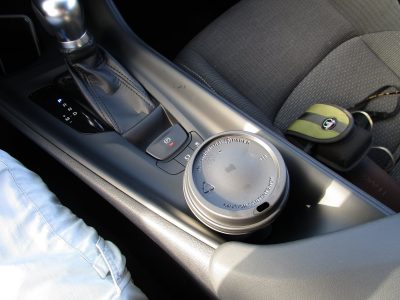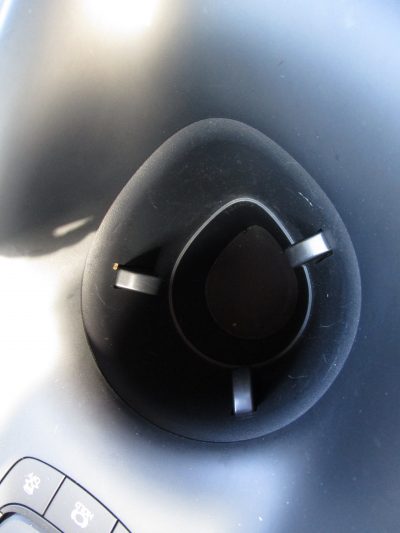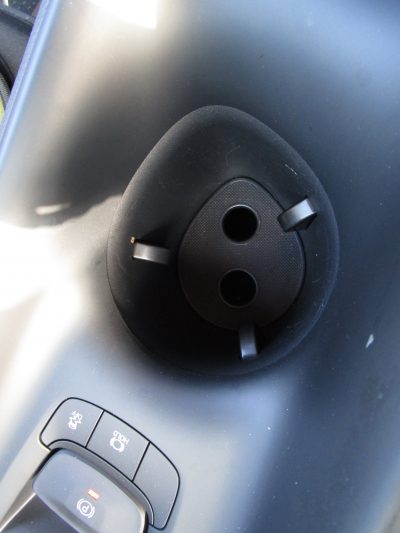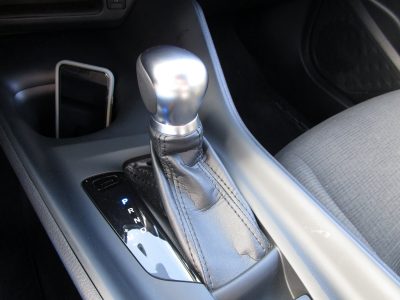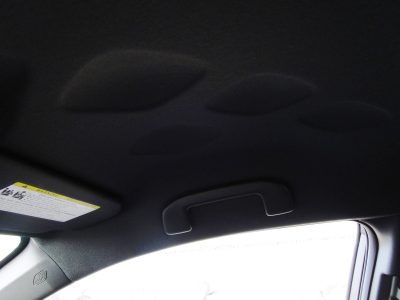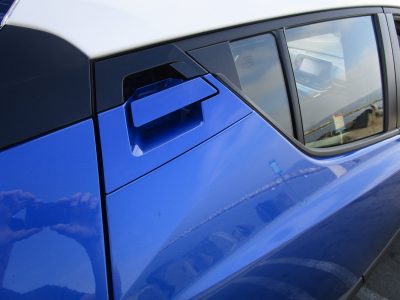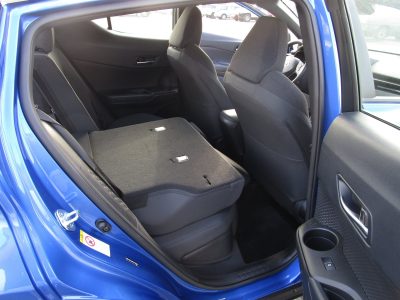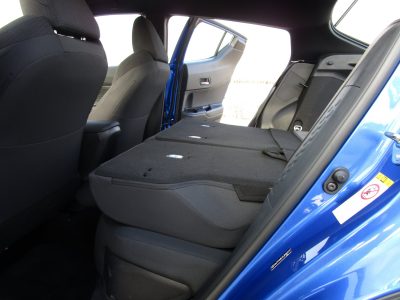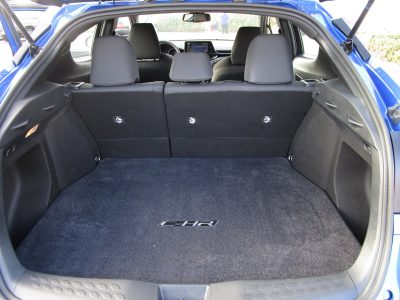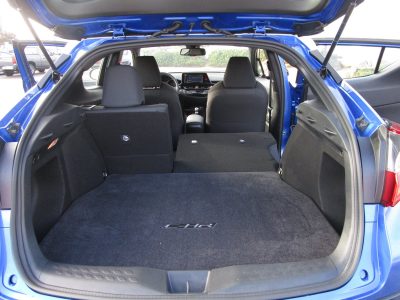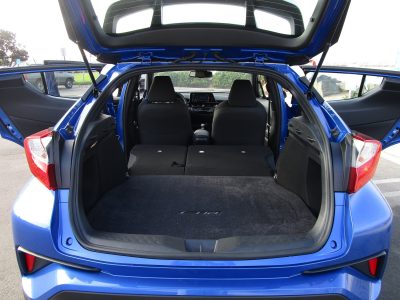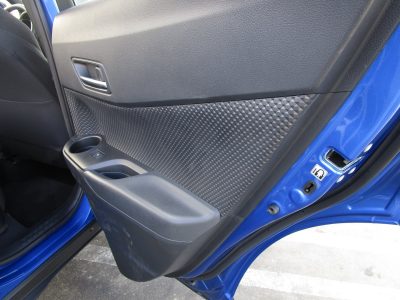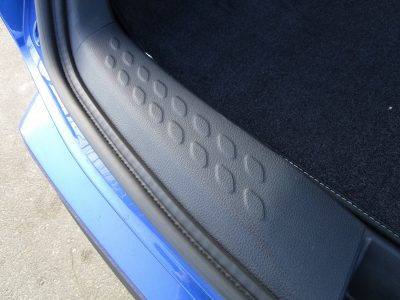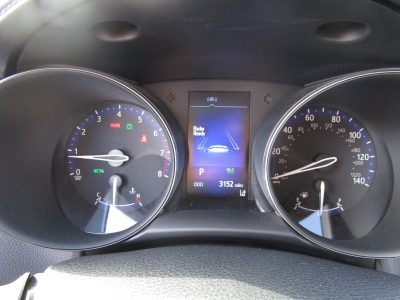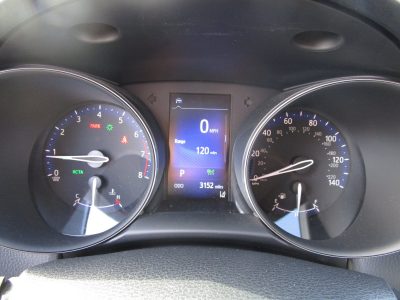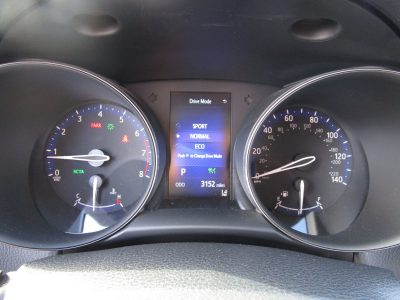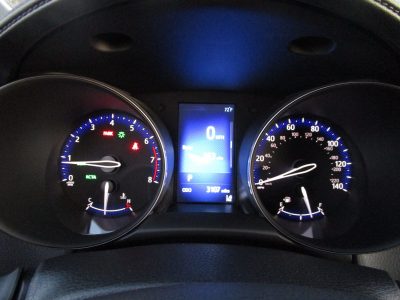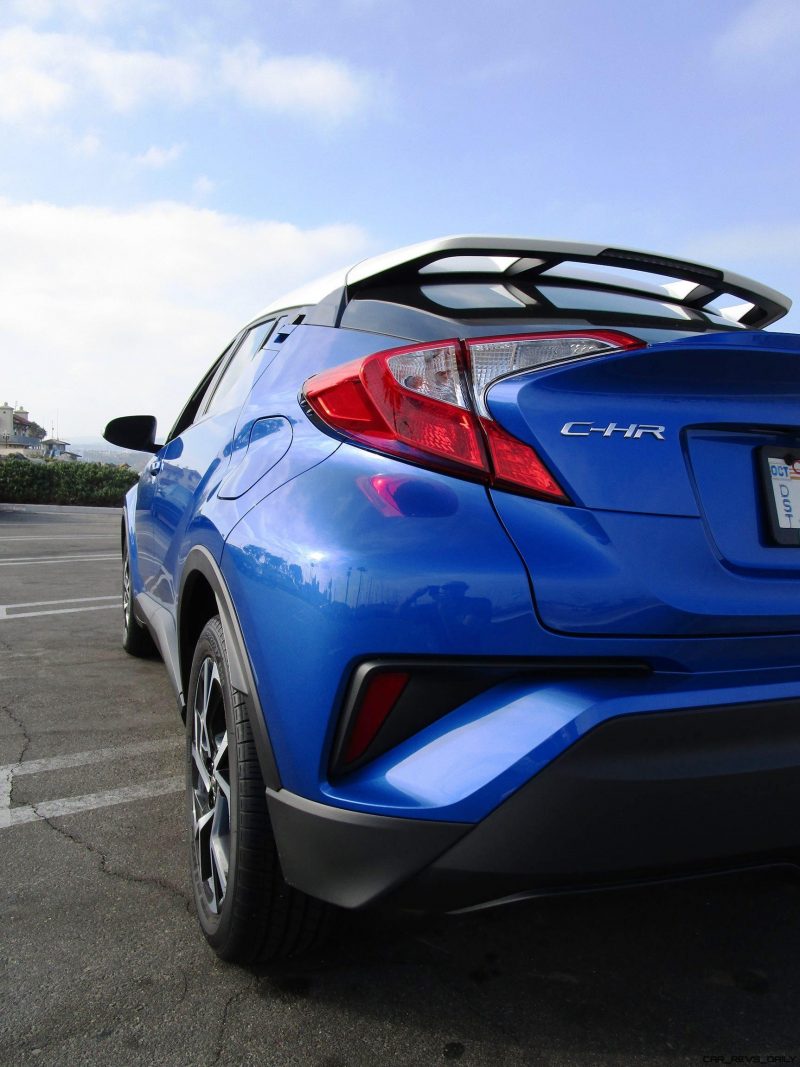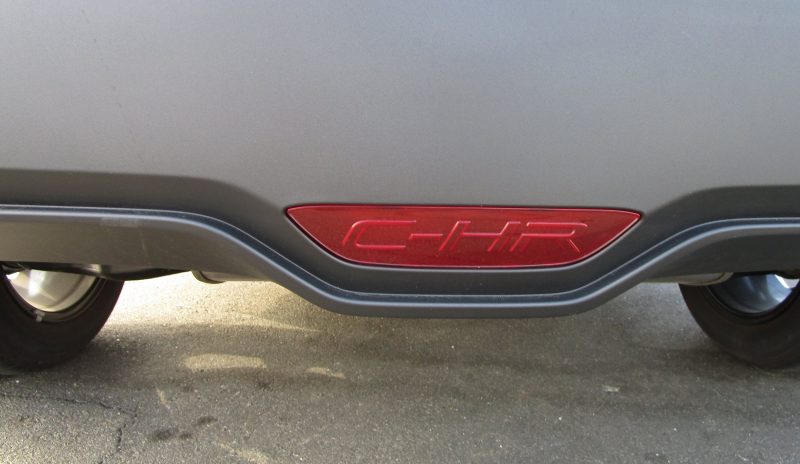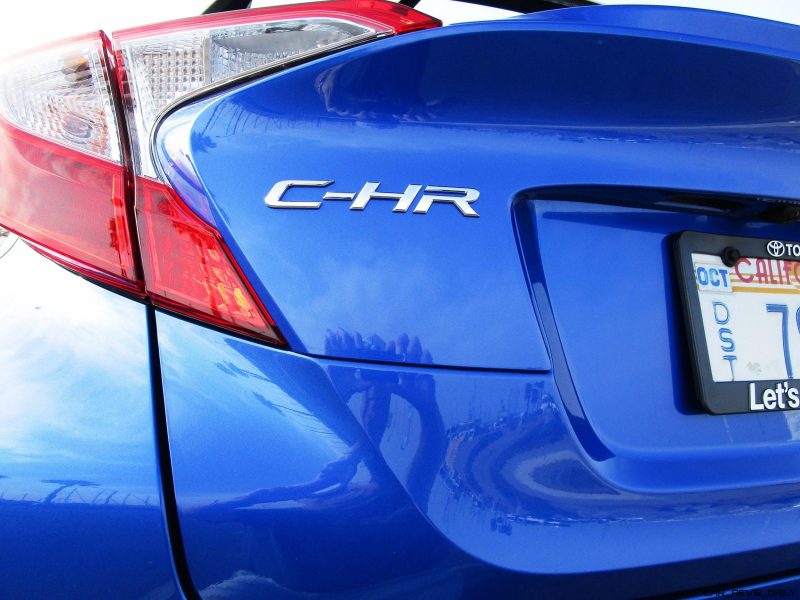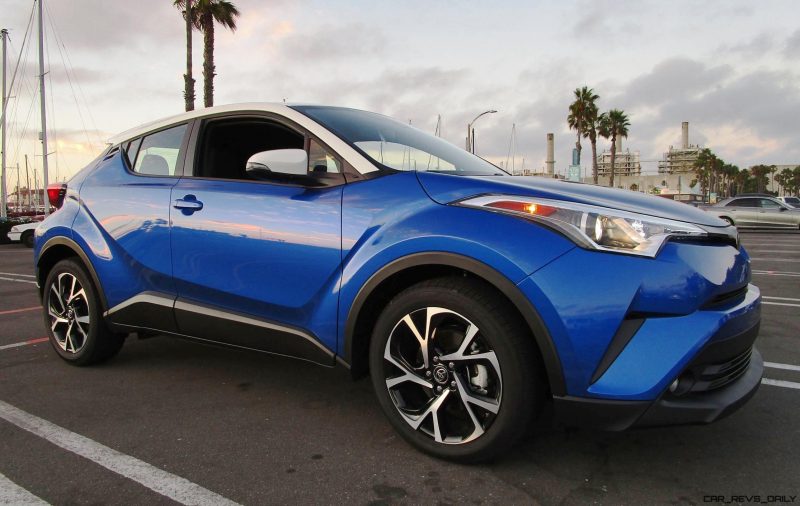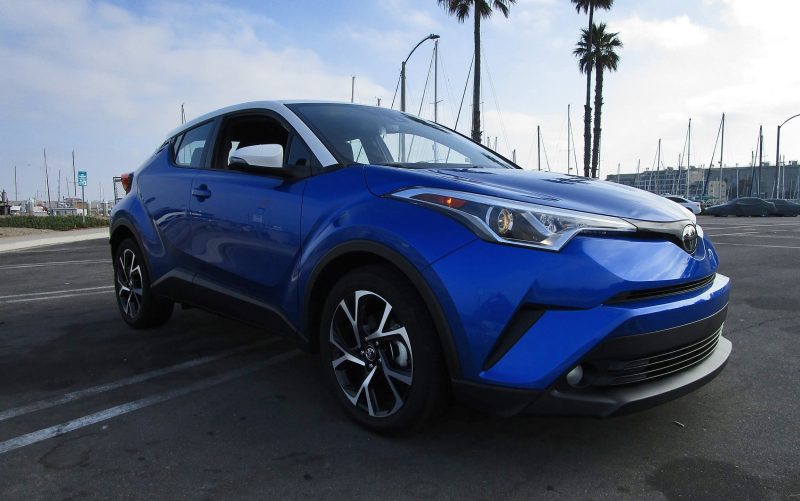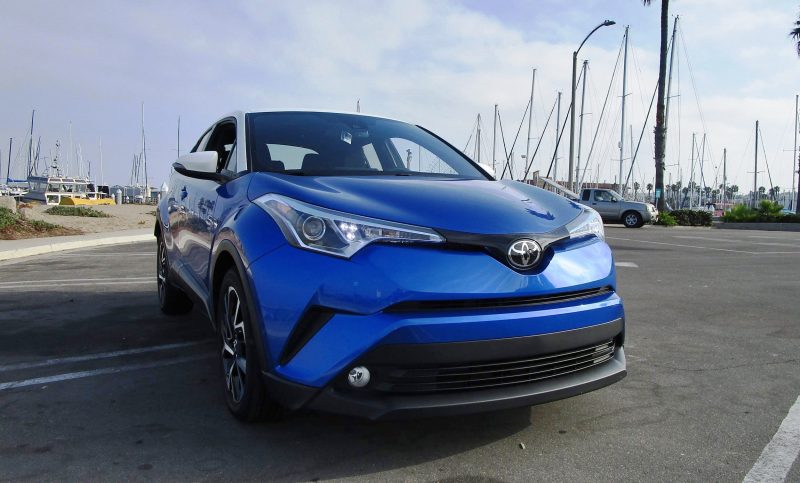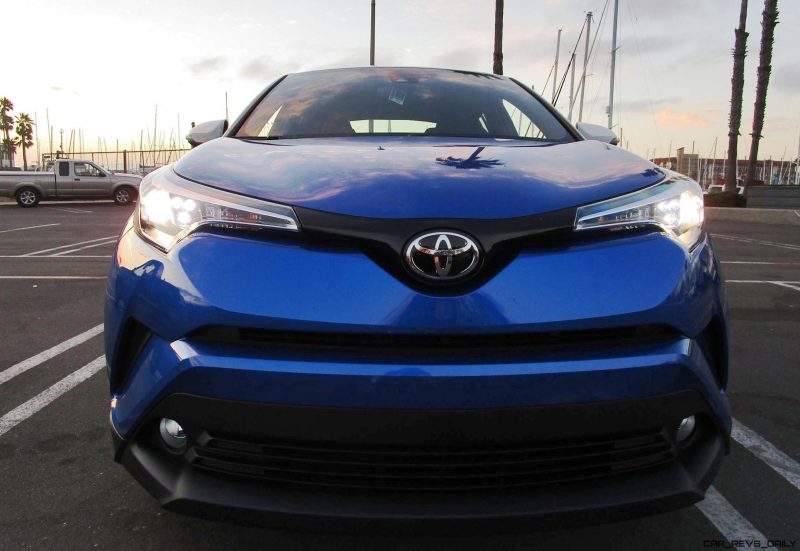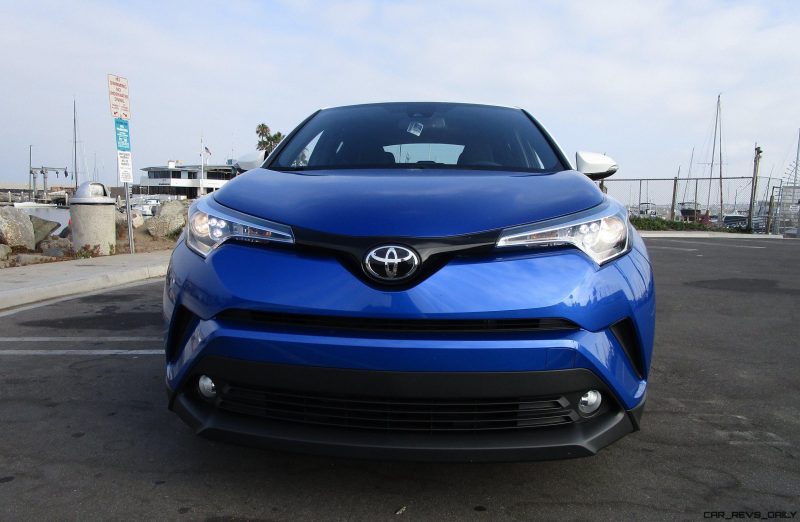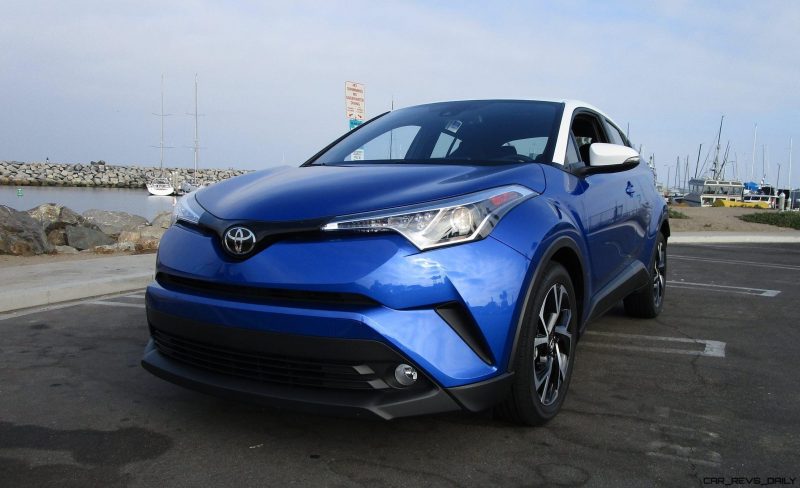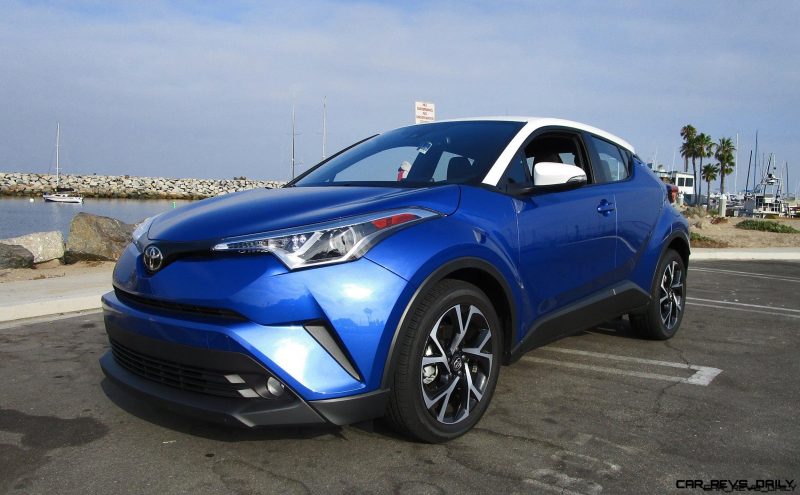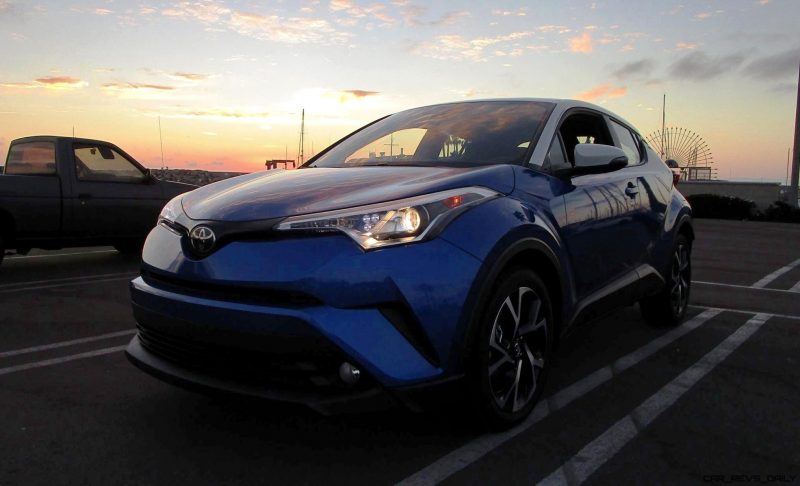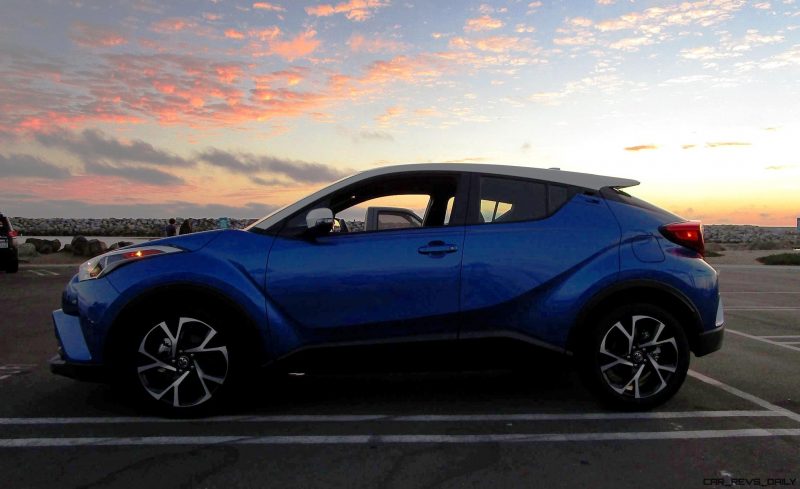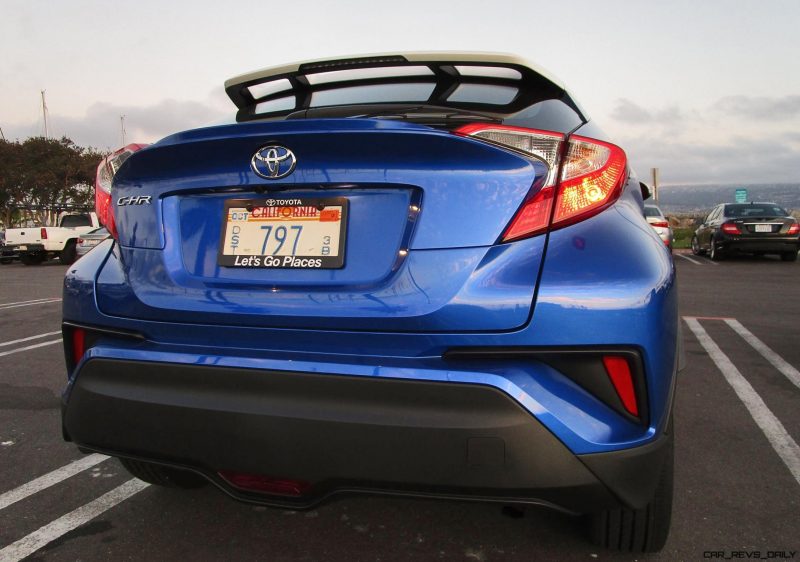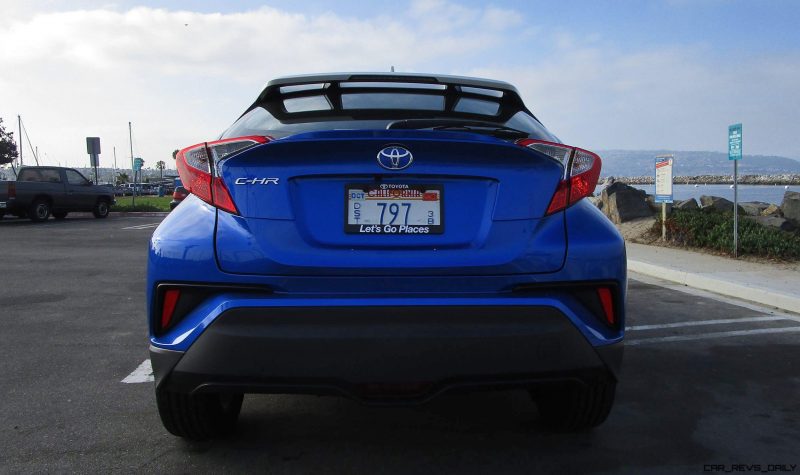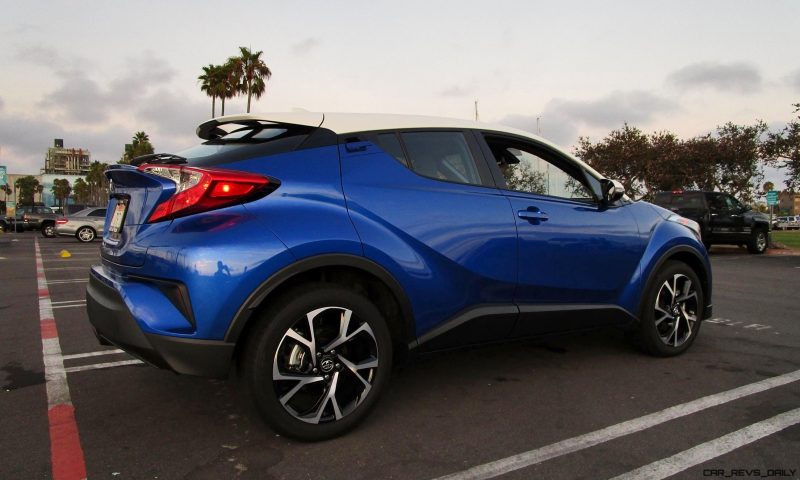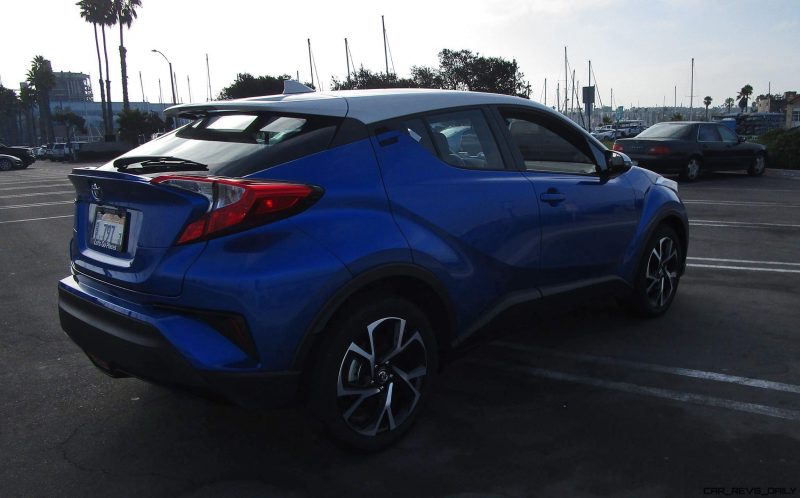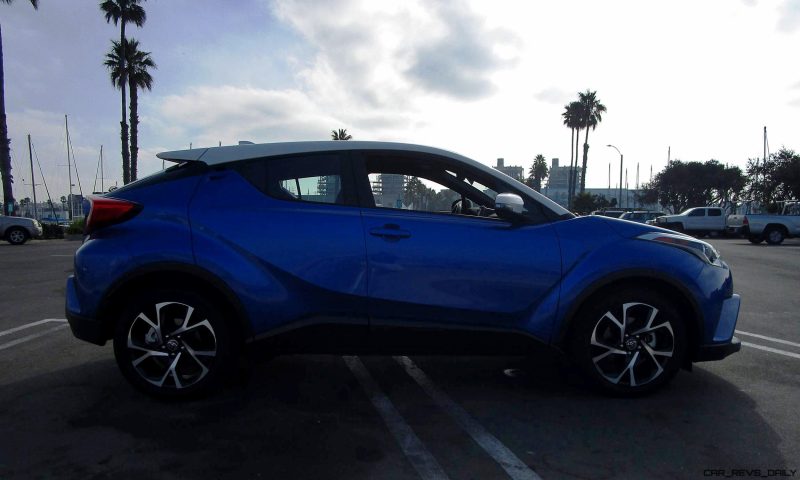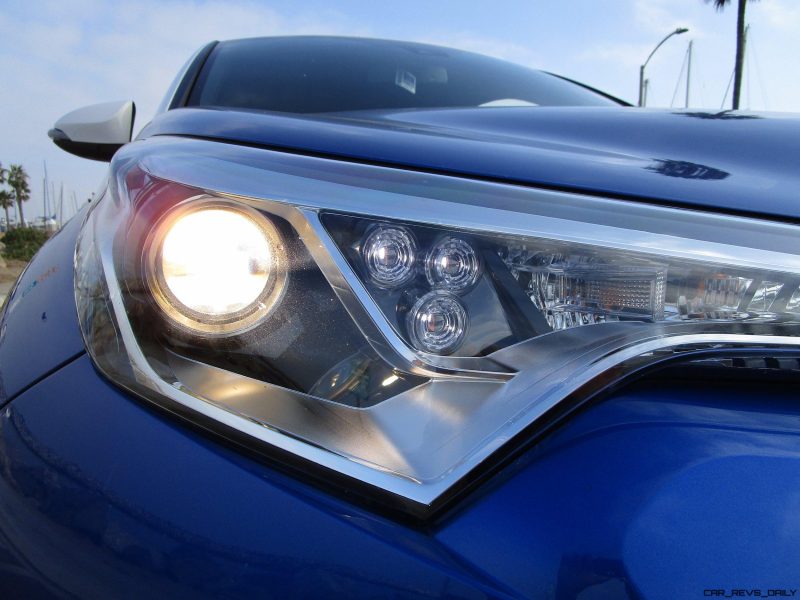There’s a lot of talk lately that the small car is on its last legs.
And you-know-who is to blame…the crossover.
It started quite a while ago with SUVs swaying the public, with their rugged looks, great versatility, and comfy, tall seating position.
Then came the small SUV wave, and it’s become a Tsunami – the Nissan Rogue is currently the best selling non-pickup vehicle (full-size pickups are still big business) in the country, with a passel of CR-V’s, RAV4’s, and CX-5’s and more not far behind.
Still, the smallest of the small cars felt safe until recently, when the Honda HR-V, Mazda CX-3, and others brought in a new wave of vehicles – the mini crossover.
Enter the Toyota C-HR.
First things first, the C-HR was meant to be a Scion, but since Toyota decided to say Scion-ara to the hip youth brand, most of its key players have effortlessly migrated to the big T.
But you can see the Scion vision in the C-HR. This is a vehicle that’s aimed at the urban youth (or Ute’s?), and is packaged in the Scion way, with loads of features and few options, all at an attractive price. No problem there.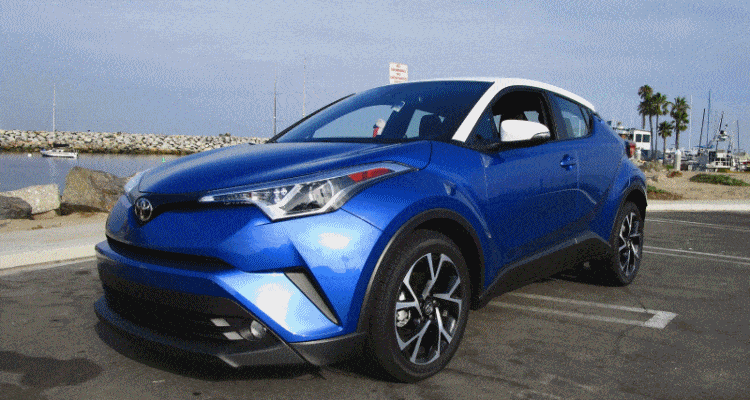
So is the C-HR the nail in the coffin of small cars like the Corolla?
Well it certainly hammers the sedan in the looks department. This thing is cool, with muscular, sharp cut lines, and a hunkered down, let’s-get-to-business look.
The standard Vortex-style 18-inch wheels fill out the wheel wells, while LED running lights give it a serious look. The standard cantilevered rear spoiler looks cool, and the rear door handles are hidden and mounted high in the doors – giving a coupe-like presence to the C-HR, but probably making it impossible for kids to open them.
It’s all tough and cool, and then our tester had to go and add the available R-Code Paint treatment.
With its bright Blue Eclipse Metallic exterior and contrasting white roof and mirrors our tester looked like, well, a muscular Smurf.
Smurfs are cute, but we’d probably go for Black Sand Pearl or Magnetic Gray Metallic.
Your interior choices are much simpler – black fabric.
But you won’t feel left out – the interior is well designed, and the quality of materials is careful to put the soft-touch stuff where you’ll connect with them most.
Where other vehicles go for a trucklet appearance, the C-HR’s cockpit has a sporty coupe vibe. There’s a diamond-shaped theme that runs through the interior –everywhere from the door panels to the headliner, while a fat leather-wrapped steering wheel and chunky satin shift lever feel great to the hands.
The front seats are a pleasant surprise – well shaped sport buckets with a long lower cushion that’s pleasing to taller drivers, and height adjustable seat cushion – even a power lumbar support.
The rear seats are a little tight on legroom – par for the class – but the doors have good size cutouts, so access is good. With the rear seats up, cargo space is excellent, and since the C-HR is offered only in front wheel drive– no rear drivetrain to get in the way – the 60/40 split rear seats plop down to give expansive space.
You also get a ton of gear for your money.
There are only two trims; ours the slightly more expensive XLE Premium, but you feel spoiled with dual-zone climate control, keyless entry with pushbutton ignition, heated front seats, and auto-dimming rearview mirror. There are even power folding outside mirrors. Neat.
Even better, you get Toyota’s Safety Sense system standard with Pre-collision with Pedestrian Detection, Lane Departure Alert with Steering Assist, Full-Speed Range Dynamic Radar Cruise Control –brings you to a complete stop if necessary, and then resumes with a tap of the cruise button – even Automatic High Beams. Impressive.
When you go for the Premium trim, you also add blind spot warning and rear cross traffic alert with the snug coupe-like sightlines, highly recommended.
There are a few sour notes in the C-HR’s happy tune, though. The rearview monitor is one of those tiny ones inside the rearview mirror – we would prefer one that shows up in the nicely sized and perfectly located 7-inch touch-screen monitor.
No available Satellite radio or Navigation is not a big hit – most buyers are happy to use their smartphones these days – but the lack of Apple CarPlay or Android Auto is a surprising omission.
Smurf’s up! How does it drive?
This is the nicest surprise of all. The C-HR could have stopped with all the goodies and cool style and pretty much had a hit on their hands. Instead, they invested time and effort to make this an entertaining drive.
Power comes from a 2.0-liter, 4-cylinder pushing out 144 hp and 139 lb-ft of torque, backed up by a CVT transmission. This doesn’t sound like a recipe for acceleration, but the little C-HR feels responsive to the throttle, especially in Sport Mode, and you can hand-shift the CVT’s seven virtual gears and zip along. It’s not fast, but it’s peppy.
The handling does you one better, with a fine-tuned suspension featuring Sachs dampers, and a multi-link rear suspension – higher price items that usually get replaced by cut-rate gear in this class. It pays off with a well-controlled ride, and it urges you to push it in the turns. It feels more baby BMW than baby Toyota.
It did leave the enthusiast in us salivating for a manual transmission model, but that’s a rarity in this class.
The only choice left is with C-HR? And it’s pretty simple.
You can have the C-HR XLE that starts at $22,500 and is pretty comprehensively equipped, or pop for the C-HR XLE Premium that rings in at $24,350. We’d pay the premium for the Premium – Blind Spot Warning and Rear Cross Traffic alert are really useful on a crossover with high hips, and little things like heated rear seats, keyless entry, fog lights and remote illumination earn their keep in the day-to-day.
You also get a little bedazzle with power folding rear mirrors, and puddle lamps that display “Toyota C-HR” on the ground when illuminated.
So we walk away very impressed with the C-HR. It looks great, it’s loaded with gear, a lot of fun to drive, and has the niceties like tall seating position and crossover-size hatch and versatility.
This probably is the small car of the next generation, but if they’re this good, we won’t be missing the small 4-door sedan for long.
Killed by a Smurf. What a way to go.
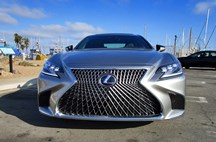
Ben Lewis grew up in Chicago, and after spending his formative years driving sideways in the winter – often intentionally – moved to sunny Southern California. He now enjoys sunny weather year-round — whether it is autocross driving, aerobatics, and learning to surf.

